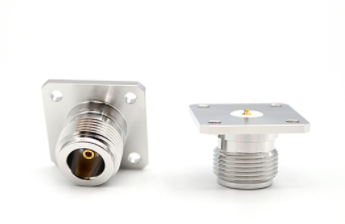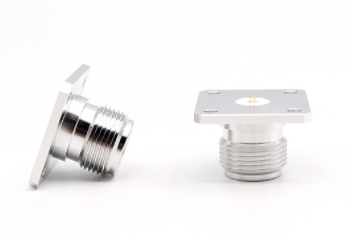N RF Connectors How to make the right RF connections
 Dec 08, 2021|
Dec 08, 2021| View:532
View:532We all use RF adapters and RF cables when we operate precision instruments. These RF adapters and RF cables work together with our instruments to give us accurate test data. So how do we make the correct RF connection for N RF Connectors?

1. Correct selection of N RF Connectors connector
First of all, to choose relatively good quality RF adapters and RF cables. When we use two original RF adapters, 89.9% of the signal can pass normally at 18GHz operating frequency. Without the use of adapters, 91.9% of the signal can pass normally. The amount of signal transmitted is similar to the previous case with two original adapters. However, after we replaced one of the adapters with a non-original poor quality adapter, only 38.1% of the signal could pass normally at 18GHz operating frequency, which has seriously affected the test. In addition, the physical size of the bad adapter is not up to the standard, and after using it for a long time, it will cause wear and tear to the RF interface of the instrument.
2. Two-handed operation, tighten the correct thread
In the connection of N RF Connectors, you need to first connect the connector and RF interface horizontal docking, and then use two-hand operation. Hold the connector in the designated position with one hand, and use a torque wrench with the other hand to make the connection at the designated position.
Never operate with one hand, because it is not easy to connect the connector to the RF port horizontally by one-hand operation. Both if a certain angle is created before screwing the connector, it will create a mechanical stress that will cause physical damage to the connector.
N RF Connectors cable also requires two-handed operation. The specific process should be, first check the interface for foreign objects. Then hold the body of the cable with one hand so that it cannot rotate, and then rotate the cable threads with the other hand to tighten them.
3. Use a torque wrench
When connecting the adapter to the cable, use a torque wrench. Using a torque wrench will ensure adequate connection while avoiding excessive force that may cause physical damage to the device. The angle of rotation with a torque wrench should not be too large, and the hand grip should not be too far forward. Both of these errors can result in incorrect force.
Different sizes of connectors require different torque wrenches. For example, for N RF Connectors, use a 12-pound torque wrench. And we also need to notice that the physical size of SMA connectors and 3.5mm connectors are the same, but the poundage of torque wrench is different. When using these two connectors, you need to pay attention to the use of the corresponding torque wrench.

Doing the above three things can avoid damage to N RF Connectors, thus ensuring the normal conduct of the instrument test, as well as the accuracy of the test.




